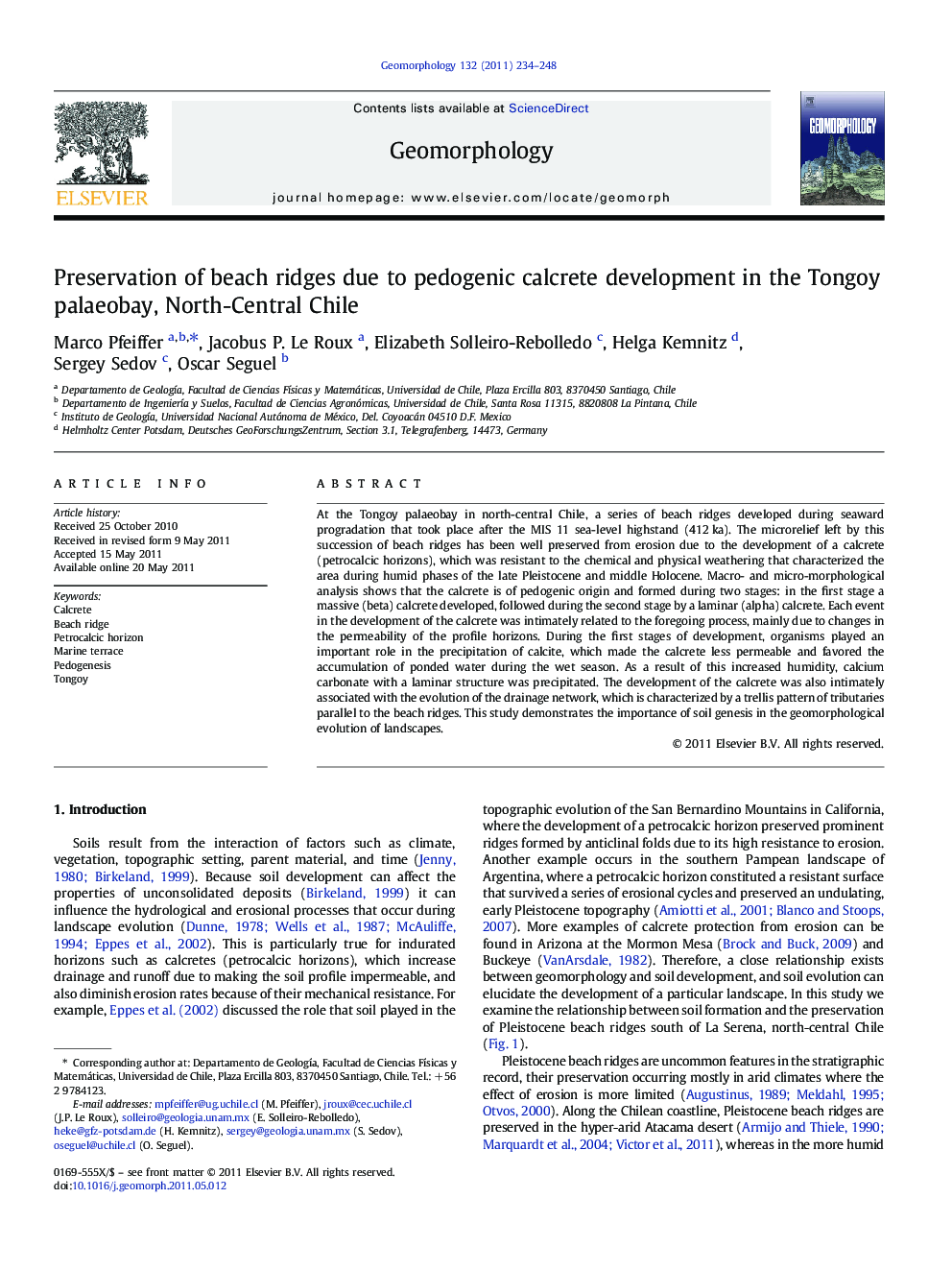| Article ID | Journal | Published Year | Pages | File Type |
|---|---|---|---|---|
| 4685396 | Geomorphology | 2011 | 15 Pages |
At the Tongoy palaeobay in north-central Chile, a series of beach ridges developed during seaward progradation that took place after the MIS 11 sea-level highstand (412 ka). The microrelief left by this succession of beach ridges has been well preserved from erosion due to the development of a calcrete (petrocalcic horizons), which was resistant to the chemical and physical weathering that characterized the area during humid phases of the late Pleistocene and middle Holocene. Macro- and micro-morphological analysis shows that the calcrete is of pedogenic origin and formed during two stages: in the first stage a massive (beta) calcrete developed, followed during the second stage by a laminar (alpha) calcrete. Each event in the development of the calcrete was intimately related to the foregoing process, mainly due to changes in the permeability of the profile horizons. During the first stages of development, organisms played an important role in the precipitation of calcite, which made the calcrete less permeable and favored the accumulation of ponded water during the wet season. As a result of this increased humidity, calcium carbonate with a laminar structure was precipitated. The development of the calcrete was also intimately associated with the evolution of the drainage network, which is characterized by a trellis pattern of tributaries parallel to the beach ridges. This study demonstrates the importance of soil genesis in the geomorphological evolution of landscapes.
Research highlights► Marine progradation associated with MIS 11 left a series of beach ridges ► A Pleistocene calcrete of pedogenic origin was developed over this surface ► Beach ridges were preserved due to weathering resistance of petrocalcic horizon.
